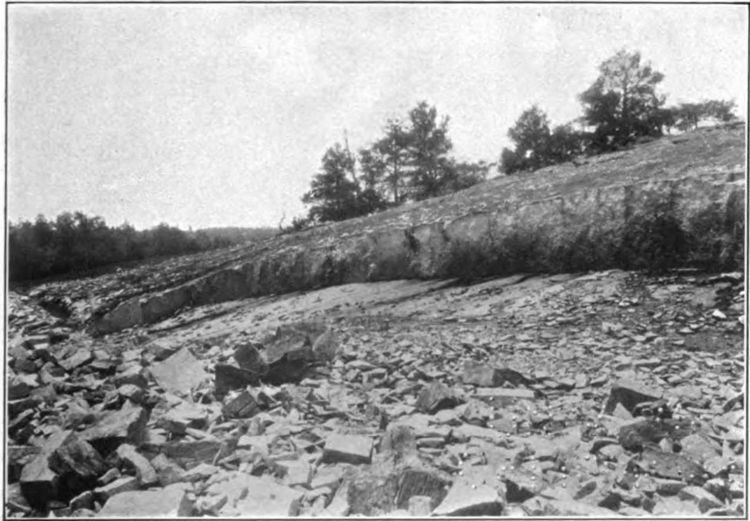Phone +1 404-998-8384 | ||
 | ||
Address 3350 Klondike Rd, Lithonia, GA 30038, USA Hours Open today · 8AM–10PMMonday8AM–10PMTuesday8AM–10PMWednesday8AM–10PMThursday8AM–10PMFriday8AM–10PMSaturday8AM–10PMSunday8AM–10PM Similar Arabia Mountain, Panola Mountain, Mall at Stonecrest, Stone Mountain, Yellow River Park | ||
The Arabia Mountain National Heritage Area is a National Heritage Area in the U.S. state of Georgia that encompasses natural, cultural, and historical elements to form a cohesive, nationally significant environment. The area is due east of Atlanta and spans 40,000 acres (16,000 ha) reaching from the historic commercial center of Lithonia to the Monastery of the Holy Spirit in Conyers, including a number of sites in between, including Panola Mountain State Park, Davidson-Arabia Mountain Nature Preserve, the Mall at Stonecrest, and more. The Heritage Area was established in 2006, and is coordinated by the Arabia Mountain National Heritage Area Alliance, which includes board members, representatives from the community and local organizations, and staff.
Contents
History
Although there is little historical evidence about what existed in the lands that currently make up the National Heritage Area, by the time of Anglo-American settlement in the early 19th century, the area was sparsely populated by Creek and Cherokee Tribes. It is believed that the area was a buffer between the two nations, used as a trade and transportation corridor. The land was ceded to the State of Georgia by the Creeks in 1821. The land was then distributed to settlers via the Georgia Land Lotteries. Throughout the rest of the 19th and most of the 20th centuries, the area remained very sparsely populated, with many of the roads remaining unpaved until the mid 1900s.[5] A railroad once existed from Atlanta to Augusta that ran through the area, near the present day location of the trail. This railroad helped support Lithonia's quarry industry, fed by the granite gneiss of Arabia Mountain. Otherwise, the surrounding land was used for small-scale farming. Several farmsteads remain in the Heritage Area, including the Lyons Farm, Vaughters Farm, and Parker House. Small settlements developed along crossroads, the South River (Ocmulgee River), and the railroad, such as the Klondike National Historic District, Flat Rock Community, and downtown Lithonia, Georgia. [6]
The creation of the Atlanta Augusta Railroad in 1845 allowed the granite quarrying industry in the area to flourish. Remnants of this industry can be seen throughout the Heritage Area in the form of quarry office ruins, rock ledges, and drill holes on the rock. Unlike Arabia, Panola Mountain was never quarried because of its geologic qualities such as softer texture and veining.
The proximity of the Arabia Mountain National Heritage Area to Atlanta, the second fastest-growing metropolitan area in the country during the 2000s[7] leaves it vulnerable to overdevelopment. This threat of encroaching sprawl was recognized after nearly a decade, as the area was determined to be a significant part of national history and earned congressional designation as a National Heritage Area in 2006.
Geology
The defining feature that gives the Arabia Mountain National Heritage Area its significance at the national level is its granite outcroppings, called monadnocks. These monadnocks are composed of a granitoid rock and are interspersed with islands of plant life. The Metro-Atlanta area has three monadnocks, Stone Mountain, Arabia Mountain and Panola Mountain. Arabia and Panola Mountains are located within the Heritage Area.
The monadnocks were formed when erosion resistant rock is exposed after softer rock is eroded over time. The individual characteristics of the monadnock are determined by the individual processes that formed the granite. For example, Arabia Mountain features a unique "swirl" pattern due to the heat and pressure that caused Arabia Mountain to have a taffy-like consistency when it was cooling over 400 million years ago. Bands of different minerals folded and twisted, creating the "tidal swirl" pattern seen today . By contrast, Panola Mountain has a flakier rock with less compressive strength due to differences in cooling rates. Panola Mountain also has a darker colored rock and different mineral grains. Differences in mineral composition between Panola and Stone Mountains indicated different magma sources at the time of formation.
Natural Systems
Primary Succession:
It took thousands of years for plants and trees to grow in the granite outcroppings. The first plants on the mountains were lichens, which draw nutrients from dust and rainwater. Acids from these lichens and mosses gradually formed pits in the rock, called chemical erosion. This allowed shallow amounts of soil to accumulate, providing a place for more plant life to take root. This process is called Primary Succession as a succession of plants colonize the rock from lichen, to mosses, to diamorpha and larger plants, then gradually accumulating enough soil to support shrubs and trees.
Physical Weathering:
Not only does plant matter such as moss erode the rock and help to build soil levels in the pits, but the stone is also weathered by non-chemical factors. Wind, freeze-thaw cycles, and even lightning strikes cause the rock to fragment and breakdown. Cracks can form, giving another foothold to plant life, and the rock is broken into particles that add to the shallow soil.
The Edge Effect:
Due to the variety of eco-systems within the Heritage Area, the "edge effect" allows for greater biodiversity where two or more ecosystems intersect. For example, where the rock outcroppings border forests, the shallow soil retains more moisture due to runoff and can support the species of both the rock outcropping and the forest.
